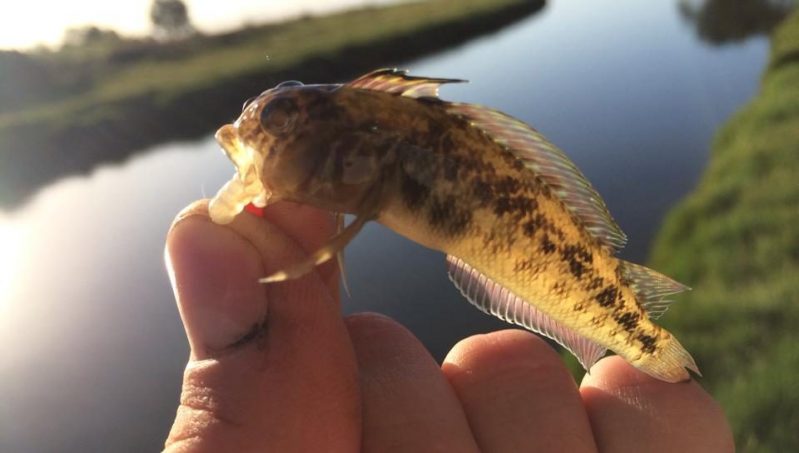How to Identify Fish…
Identifying fish can be tough. Fortunately, in an Internet-driven world, it’s much easier now than it was in the not-so-distant past. There are a number of resources I’ve used, and I figured by listing them here, you might be able to identify that troublesome fish you’ve had listed as “unidentified” for days, months, or even years as some of mine were.

Trying to identify a species? Try following these steps:
1) Local Knowledge
The first step is to ask locals where you caught it. Locals have all sorts of scientifically-inaccurate nicknames (or “hicknames” as I like to call them), but they can sometimes point you in the right direction.
2) Social Media
Social media is a beautiful thing. Post your mystery fish on Facebook, Instagram, or Twitter and tag local authorities or expert anglers who might know what species you’ve caught.
Of course, there’s also Fishbrain, the fishing social media, which has “fishial recognition,” in it’s Pokedex. Okay, it’s not called “fishial recognition” or a Pokedex, but the concepts are the same. Basically, they’ve developed an algorithm that allows their software to identify the catches you upload with varying levels of accuracy. For common fish, it’s remarkably accurate.
3) Biologists
Though fish and wildlife management in the United States is somewhat convoluted, at least we have agencies that try to manage and preserve our wildlife and wildlands. Each species and waterway could be managed by a different entity, so you might have to make a few contacts.
In the Klamath Basin for instance, we have active Oregon Department of Fish and Wildlife biologists, as well as offices for the United States Fish and Wildlife Service, United States Geological Survey, Bureau of Land Management, and United States Forest Service. At any given time, each could have a biologist present in the Basin, and typically they each have a different habitat or species under their purview.
To help you in your search, I’ve provided links to each and every state fisheries office. These vary by state, but most of the links below will help you get in contact with a fisheries biologist.
Alabama — Department of Conservation & Natural Resources
Alaska — Department of Fish & Game
Arizona — Game & Fish Department
Arkansas — Game & Fish Commission
California — Department of Fish & Wildlife
Colorado — Parks & Wildlife
Connecticut — Energy & Environmental Protection
Delaware — Division of Fish & Wildlife
Florida — Fish & Wildlife Conservation Commission
Georgia — DNR: Wildlife Resources Division
Hawaii — Division of Forestry & Wildlife
Idaho — Department of Fish & Game
Illinois — Department of Natural Resources
Indiana — DNR: Division of Fish & Wildlife
Iowa — DNR: Fishing
Kansas — Department of Wildlife, Parks, & Tourism
Kentucky — Department of Fish & Wildlife Resources
Louisiana — Department of Wildlife & Fisheries
Maine — Department of Inland Fisheries & Wildlife
Maryland — Department of Natural Resources
Massachusetts — Department of Fish & Game
Michigan — Department of Natural Resources
Minnesota — Department of Natural Resources
Mississippi — Department of Wildlife, Fisheries, & Parks
Missouri — Department of Conservation
Montana — Department of Fish, Wildlife, & Parks
Nebraska — Department of Game & Parks
Nevada — Department of Wildlife
New Hampshire — Fish & Game
New Jersey — DEP: Division of Fish & Wildlife
New Mexico — Department of Game & Fish
New York — DEC: Division of Fish & Wildlife
North Carolina — Wildlife Resources Commission
North Dakota — Game & Fish Department
Ohio — DNR: Division of Wildlife
Oklahoma — Department of Wildlife Conservation
Oregon — Department of Fish & Wildlife
Pennsylvania — Fish & Boat Commission
Rhode Island — Department of Environment Management
South Carolina — Department of Natural Resources
South Dakota — Department of Game, Fish, & Parks
Tennessee — Wildlife Resources Agency
Texas — Parks & Wildlife Department
Utah — Division of Wildlife Resources
Vermont — Fish & Wildlife Department
Virginia — Department of Game & Inland Fisheries
Washington — Department of Fish & Wildlife
Washington D.C. — Department of Energy & Environment
West Virginia — DNR: Wildlife Resources
Wisconsin — Department of Natural Resources
Wyoming — Game & Fish Department
4) Species Communities
There are several major groups of anglers dedicated to the science of fishing. The largest would be the “Species Hunters” or “Lifelisters” who try to catch as many fish species as possible. This group is not limited to the United States, but is worldwide.
Great resources include specieshunters.com, a forum-like community dedicated to catching and cataloging as many species as possible. You can join for free and post a pic of a “Zwoonzel”, the Dutch term for mystery fish, and members of the community will identify it for you.
The other great resource is the North American Native Fishes Association (NANFA), which has a website, but also has a Facebook Page. The latter allows you to post fish and get community input on an ID. It’s a Closed Group, but simply request to join, and as long as you’re respectful, you’ll be allowed in.
5) Books
You can always read a reference book or field guide and just look through it until you see what works best for you. You can click here for the most comprehensive list of fish identification and reference books around.
Return to the How To… section, or follow my own #SpeciesQuest as I seek to catch as many fish as I can, using these resources to identify them.
